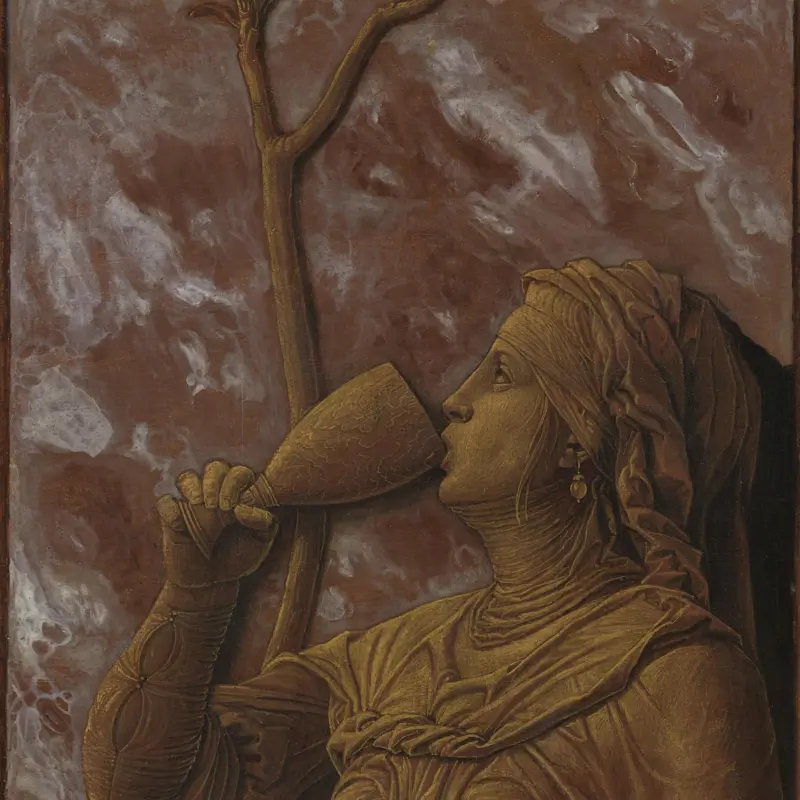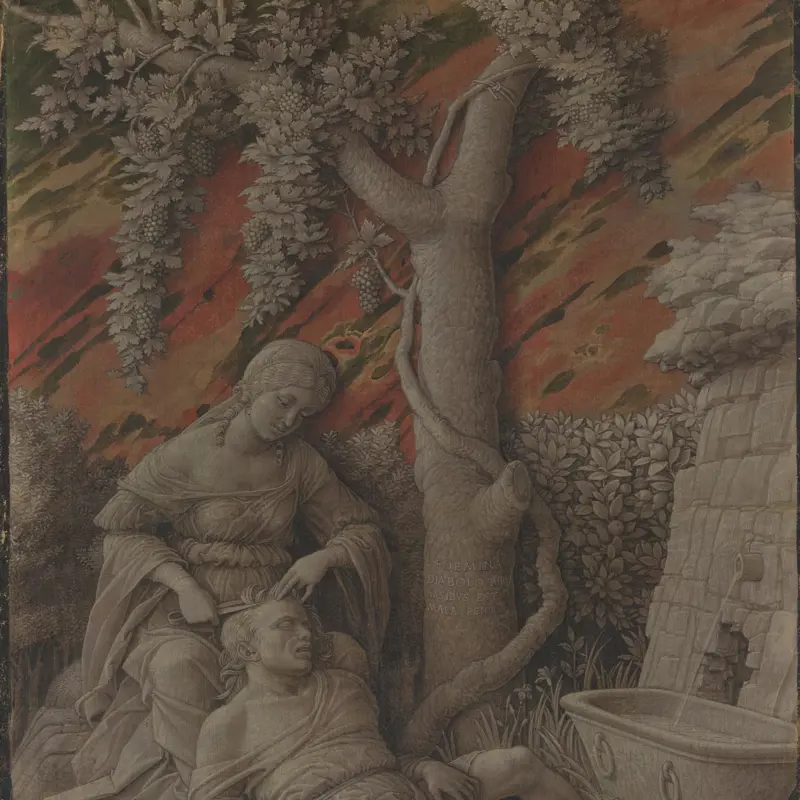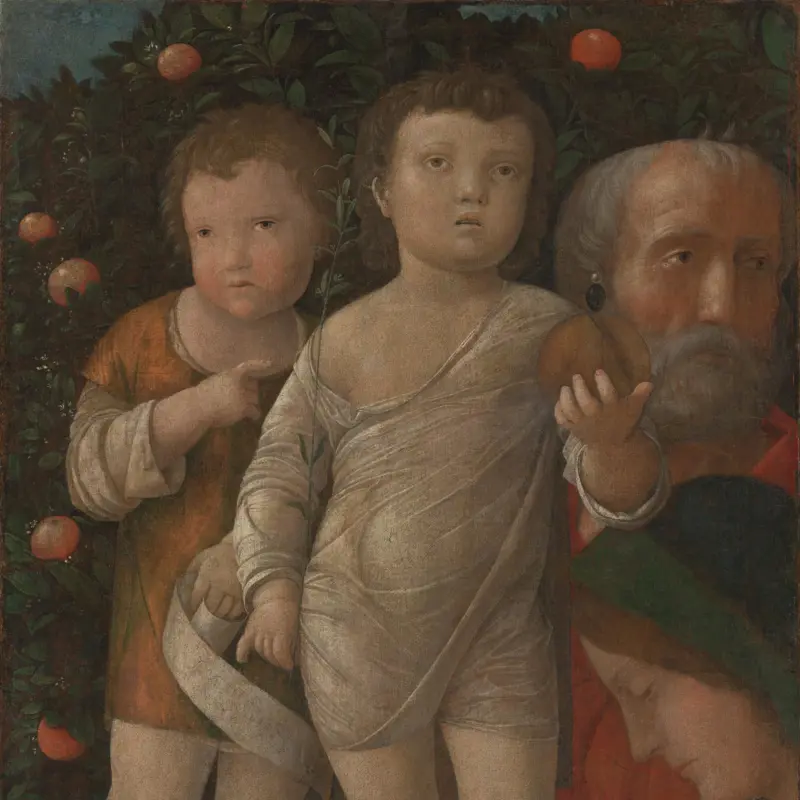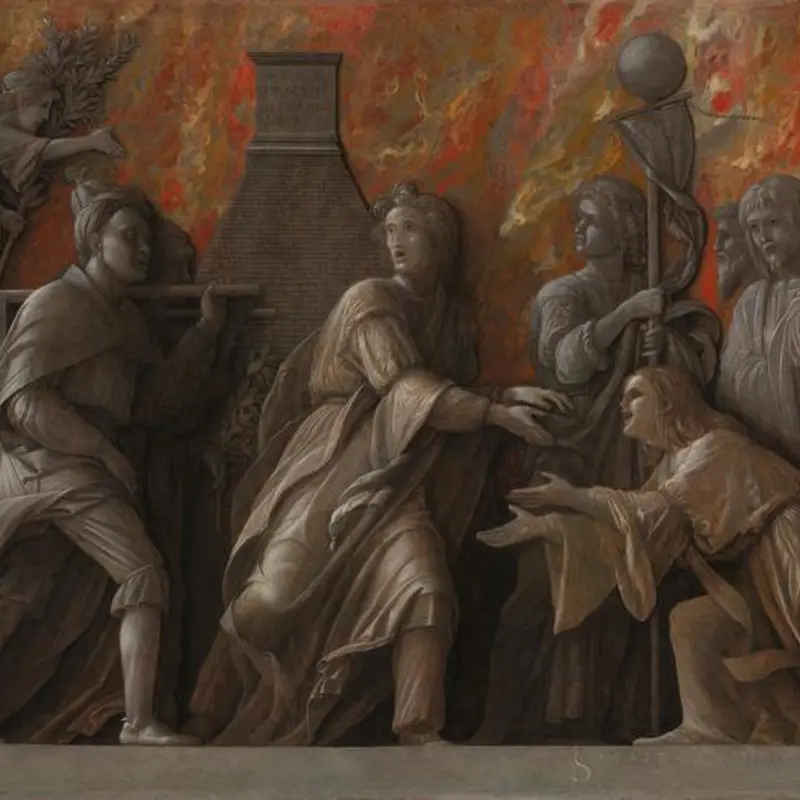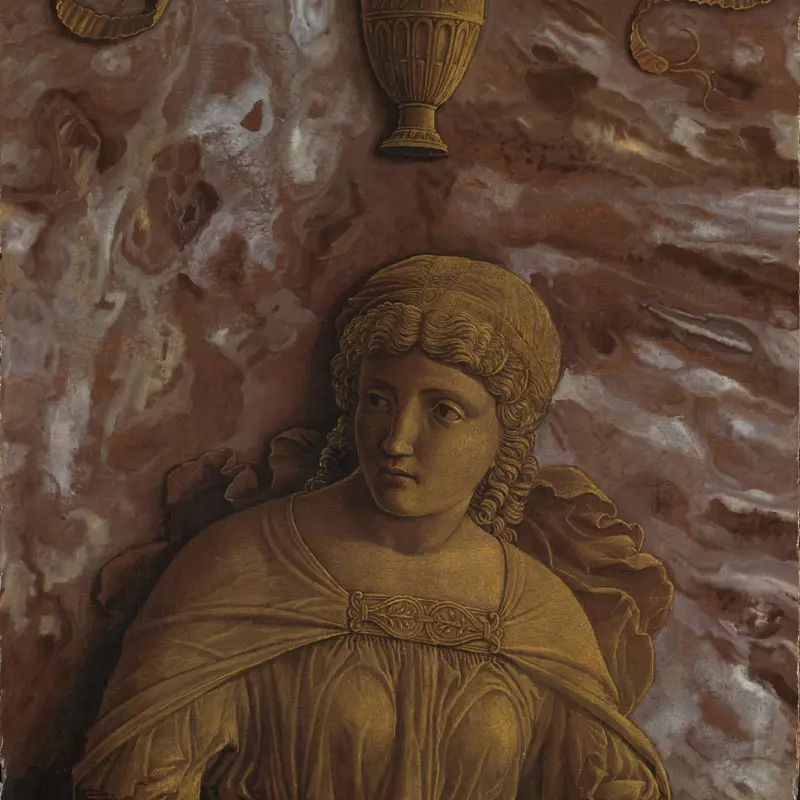Imitator of Andrea Mantegna, 'The Resurrection', perhaps 1460-1550
About the work
Overview
According to the Gospel of Matthew, the Roman governor Pontius Pilate set a guard of soldiers at Christ’s tomb to prevent anyone from stealing his body; they did not expect Christ to rise from the dead. Here we see that the soldiers have fallen asleep, and are completely unaware of Christ’s resurrection.
This scene was popular in Renaissance painting as it provided visual affirmation of the Christian belief in Christ’s bodily resurrection. Christ stands triumphantly upon his tomb, which is a classical-style marble sarcophagus; he holds the banner of the Resurrection – the white flag with a red cross. We also see a large and graceful tree with small fresh leaves – a symbol of life and hope which, in its height and grace, echoes Christ’s pose upon his tomb.
Key facts
Details
- Full title
- The Resurrection
- Artist
- Imitator of Andrea Mantegna
- Artist dates
- About 1431 - 1506
- Part of the series
- Three Scenes of the Passion of Christ
- Date made
- Perhaps 1460-1550
- Medium and support
- Oil on wood
- Dimensions
- 42.5 × 31.1 cm
- Acquisition credit
- Bought, 1881
- Inventory number
- NG1106
- Location
- Not on display
- Collection
- Main Collection
- Previous owners
Provenance
Additional information
Text extracted from the ‘Provenance’ section of the catalogue entry in Martin Davies, ‘National Gallery Catalogues: The Earlier Italian Schools’, London 1986; for further information, see the full catalogue entry.
Exhibition history
-
2008Mantegna, 1431-1506Musée du Louvre26 September 2008 - 5 January 2009
Bibliography
-
1951Davies, Martin, National Gallery Catalogues: The Earlier Italian Schools, London 1951
-
1986Davies, Martin, National Gallery Catalogues: The Earlier Italian Schools, revised edn, London 1986
-
2001
C. Baker and T. Henry, The National Gallery: Complete Illustrated Catalogue, London 2001
About this record
If you know more about this work or have spotted an error, please contact us. Please note that exhibition histories are listed from 2009 onwards. Bibliographies may not be complete; more comprehensive information is available in the National Gallery Library.
Images
About the series: Three Scenes of the Passion of Christ

Overview
These three panels celebrate Christ’s bodily resurrection from the dead. It is likely that all three came from the same series and were painted by the same artist. The pictures reflect aspects of Mantegna’s style, particularly engravings he made at the end of the 1450s and beginning of the 1460s. The jagged rock formations, the angular folds of the draperies and the sinuous figures are particularly characteristic of Mantegna’s paintings.
The painter is unknown but technical analysis of the pigments used shows that they are unlikely to have been painted more than about 50 years after Mantegna’s death. Analysis of the underdrawing (the initial design as drawn on the panel) shows that the painter did not make any alterations to the overall design or any of the details. This suggests that they were tracing directly from a pre-existing image rather than inventing an original composition.




